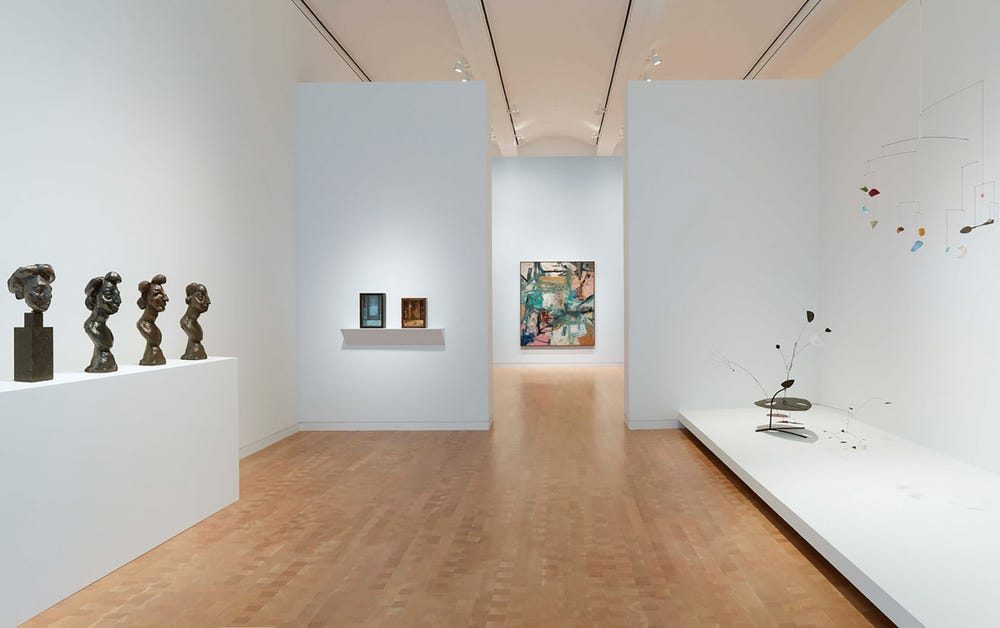Born on a farm in rural Saskatchewan, Canada, artist Agnes Martin created radical works on canvas whose light presence conceal the complexity of their making. Pilgrimage, 1966, in Glenstone’s collection, is carefully composed in a nearly imperceptible hand-drawn graphite grid. While often aligned with Minimalism, Martin felt a kinship with Abstract Expressionism and attempted to transcend materiality and engage with broader universal themes. She moved to the Coenties Slip neighborhood of New York in 1957, where she met and mingled with contemporaries such as Ellsworth Kelly and Robert Indiana. In the late 1960s, she left New York for the comparatively remote New Mexico. There, she ceased painting for a time, only to “reemerge” in 1974 with a new body of work that included subtle strips of pale colors. She lived alone for the rest of her life in the Southwestern desert, quietly demonstrating a thoughtful humility and steadfast devotion to her work.
–Max Levin, from the Glenstone Field Guide


